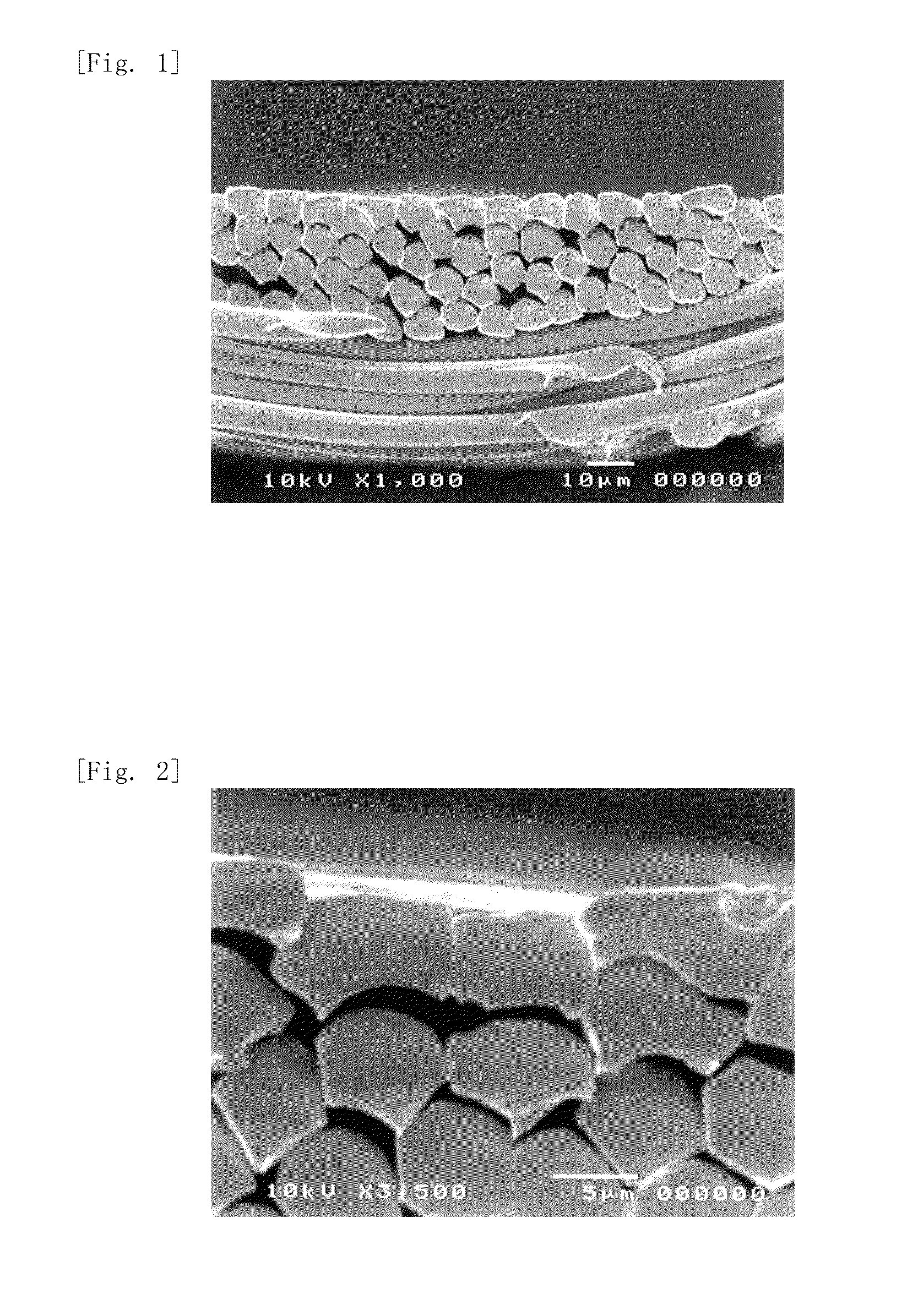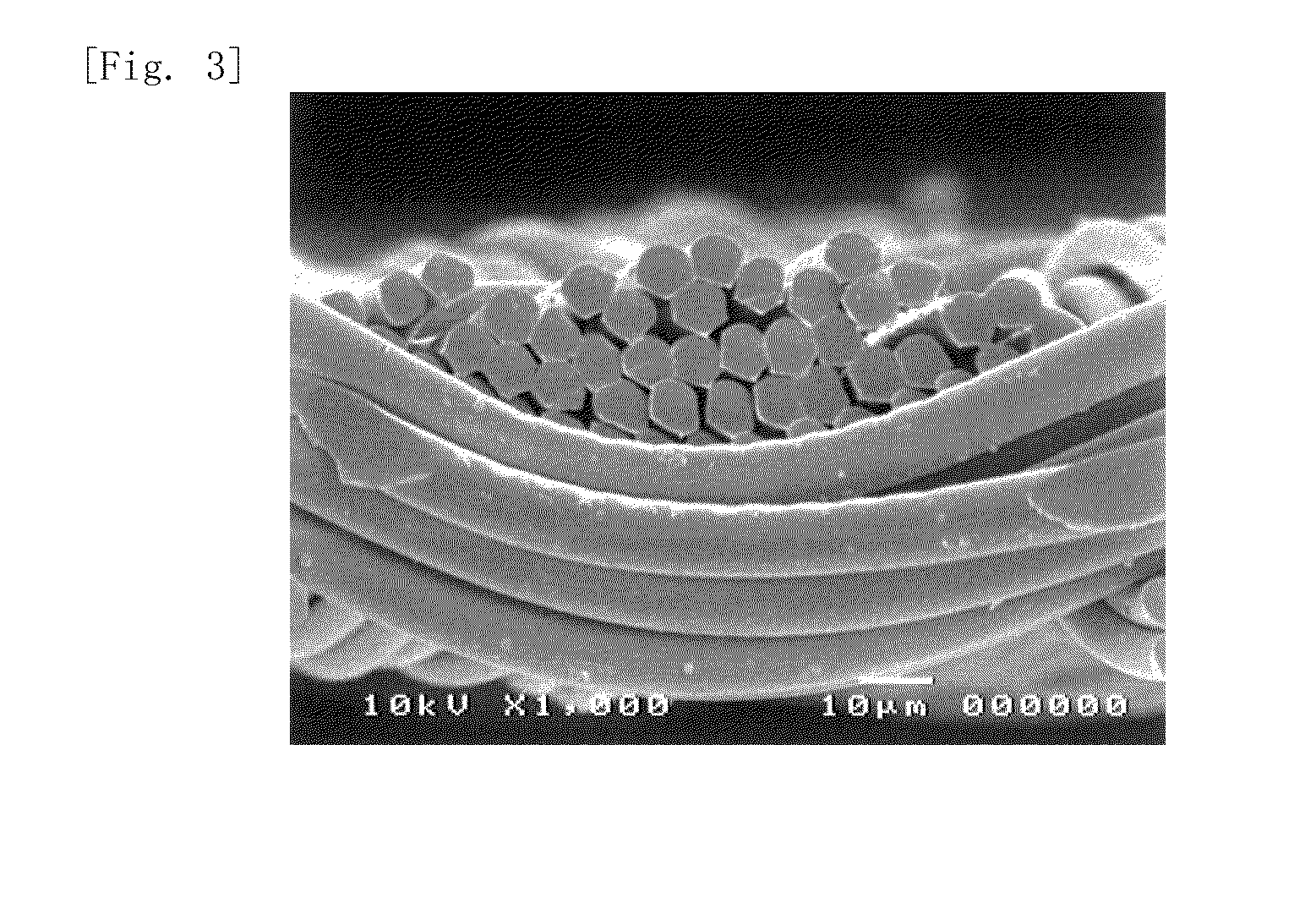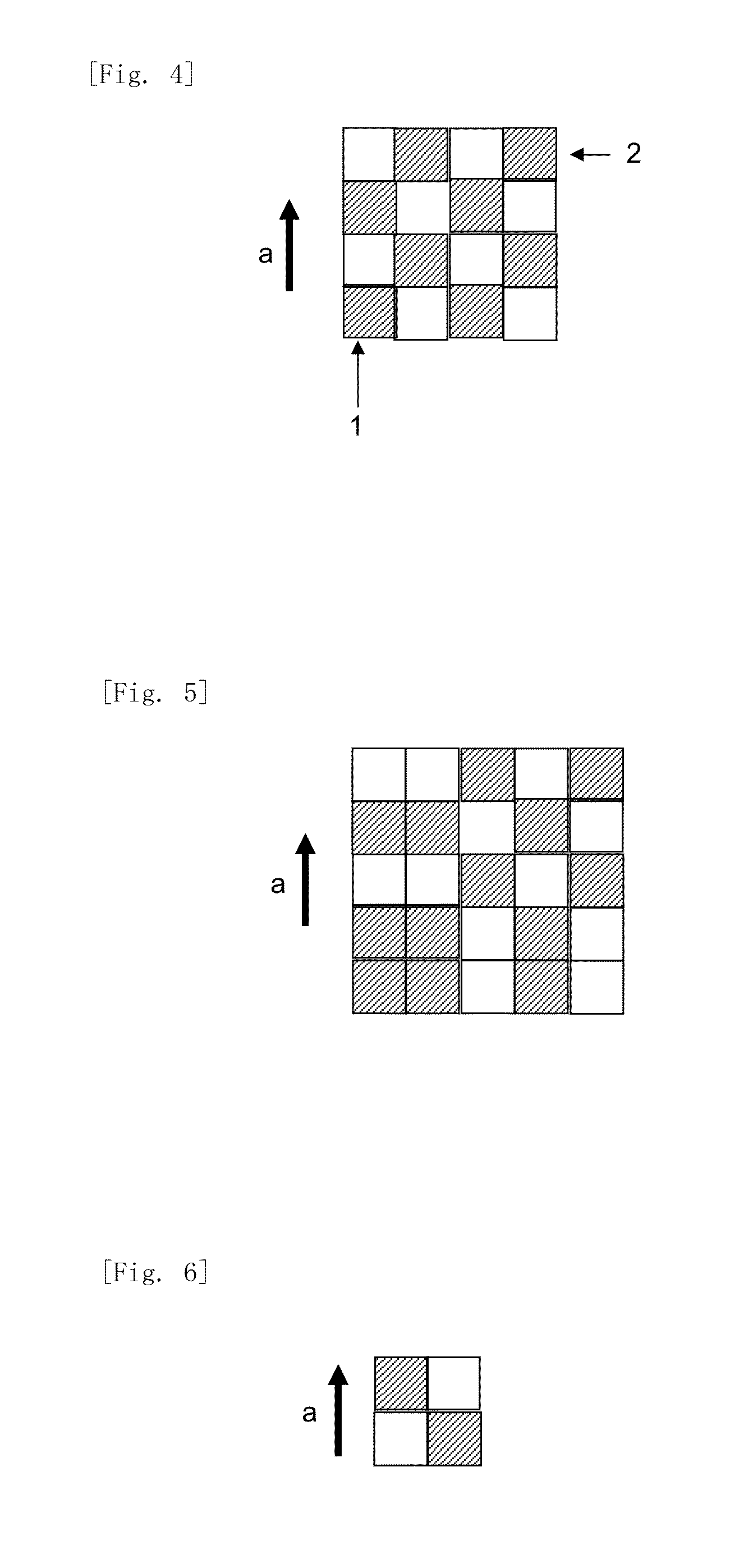Base fabric for stent graft, and stent graft
a technology for stent grafts and base fabrics, which is applied in the field of base fabrics for stent grafts and stent grafts, can solve the problems of low fiber density, difficult to make a base fabric with a thickness of 90 m or less, and difficult to insert it into a catheter of 18 fr or less, and achieves low permeability and high strength.
- Summary
- Abstract
- Description
- Claims
- Application Information
AI Technical Summary
Benefits of technology
Problems solved by technology
Method used
Image
Examples
example 1
[0071]A polyethylene terephthalate fiber of 22 decitex and 12 filaments was used to be weaved into a plain weave in a water jet loom. This was scoured, dried, and set to make a woven fabric with a finished yarn density of 250 strands / 2.54 cm in a longitudinal direction and 200 strands / 2.54 cm in a lateral direction and a cover factor of 2111. The obtained woven fabric was thin and had low permeability and excellent flexibility.
example 2
[0072]A woven fabric was made in the same manner as in Example 1 except a finished yarn density of 220 strands / 2.54 cm in a longitudinal direction and 210 strands / 2.54 cm in a lateral direction. Then, only one roll was overheated to 160° C. to be subjected to calender treatment and was thermally set at 180° C. The obtained woven fabric was thin and had low permeability.
example 3
[0073]A woven fabric was made in the same manner as in Example 1 except that the fiber was a polyethylene terephthalate fiber of 22 decitex and 48 filaments and had a finished yarn density of 300 strands / 2.54 cm in a longitudinal direction and 200 strands / 2.54 cm in a lateral direction. The obtained woven fabric had further suppressed permeability and excellent flexibility in comparison with the woven fabric of Example 1.
PUM
| Property | Measurement | Unit |
|---|---|---|
| thickness | aaaaa | aaaaa |
| thickness | aaaaa | aaaaa |
| thickness | aaaaa | aaaaa |
Abstract
Description
Claims
Application Information
 Login to View More
Login to View More - R&D
- Intellectual Property
- Life Sciences
- Materials
- Tech Scout
- Unparalleled Data Quality
- Higher Quality Content
- 60% Fewer Hallucinations
Browse by: Latest US Patents, China's latest patents, Technical Efficacy Thesaurus, Application Domain, Technology Topic, Popular Technical Reports.
© 2025 PatSnap. All rights reserved.Legal|Privacy policy|Modern Slavery Act Transparency Statement|Sitemap|About US| Contact US: help@patsnap.com



